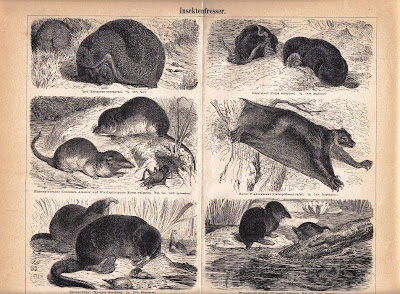
1. Rhombus Maximus - Turbot “Kalkan” 1. - eightfold, 1a. - fourfold, 1b. treefold
2. Nauplius - larva (garnela) 2b. Penaeus - brown tiger prawn
3. Rough barnacle larva, 3a. Rough barnacle colony
4. Nauplius of Notopterophorus - Papilio larvas, 4a. male, 4b. female
5. Nauplius of Peltogaster - Peltogaster paguri parasitize larva
6. Pentacrinus state of Antedon - Medusa's head pentacrinus, 6a. Antedon
7. Torpedo ray - electric ray, 7a. Embrio of the tropedo ray
8. Scyllium - European nursehound or small-spotted dogfish 8a. Embrio of the European nursehound
FISHES

1. Butterflyfish (Chaetodon setifer)
2. Diagonal Butterflyfish (Chaetodon fasciatus)
3. Lineated Butterflyfish (Chaetodon vittatus)
4. Heniochus macrolepidotus
5. Angelfish (Holacanthus diacanthus)
6. Imperial Angelfish (Holacanthus imperator

The term Sturgeon includes over 20 species commonly referred to as sturgeon and several closely related species that have distinct common names, notably sterlet, kaluga and beluga. Collectively, the family is also known as the True Sturgeons. They are distinctive for their elongated bodies, lack of scales, and occasional great size: Sturgeons ranging from 7–12 feet (2-3½ m) in length are common, and some species grow up to 18 feet (5.5 m). Most sturgeons are anadromous bottom-feeders, spawning upstream and feeding in river deltas and estuaries. While some are entirely freshwater, very few venture into the open ocean beyond near coastal areas
BLUE SHARK

American Plaice

The American plaice or sole, Hippoglossoides platessoides, is a flatfish that belongs, along with other right eyed flounders, to the Pleuronectidae family. Their range is from southern Labrador to Rhode Island. They spawn in the Gulf of Maine, with peak activity in April and May. They grow to a maximum length of 70 cm (28 inches). The species is considered by the Northwest Atlantic Fisheries Organization to be overfished, with no signs of recovery. American plaice may be an intermediate host for the nematode parasite Otostrongylus circumlitis, which is a lungworm of seals, primarily affecting animals less than 1 year of age.







































 CIRCUS
CIRCUS






















